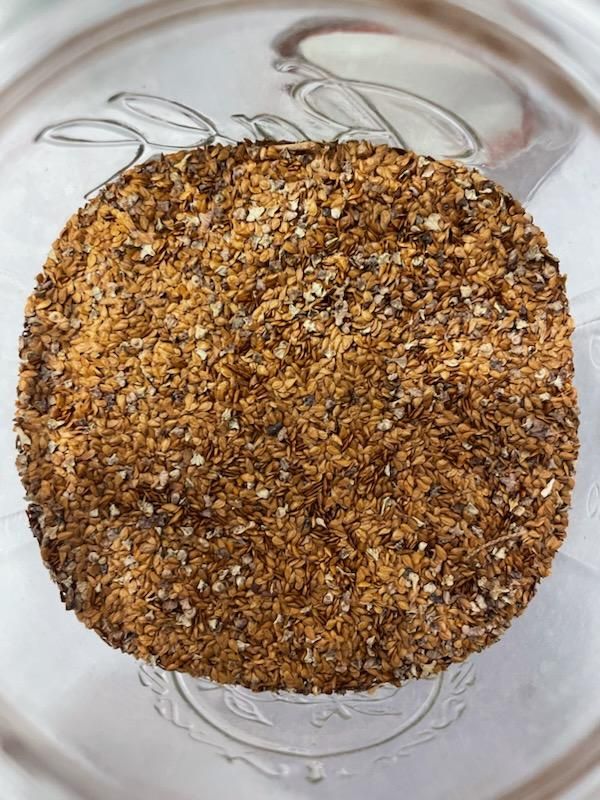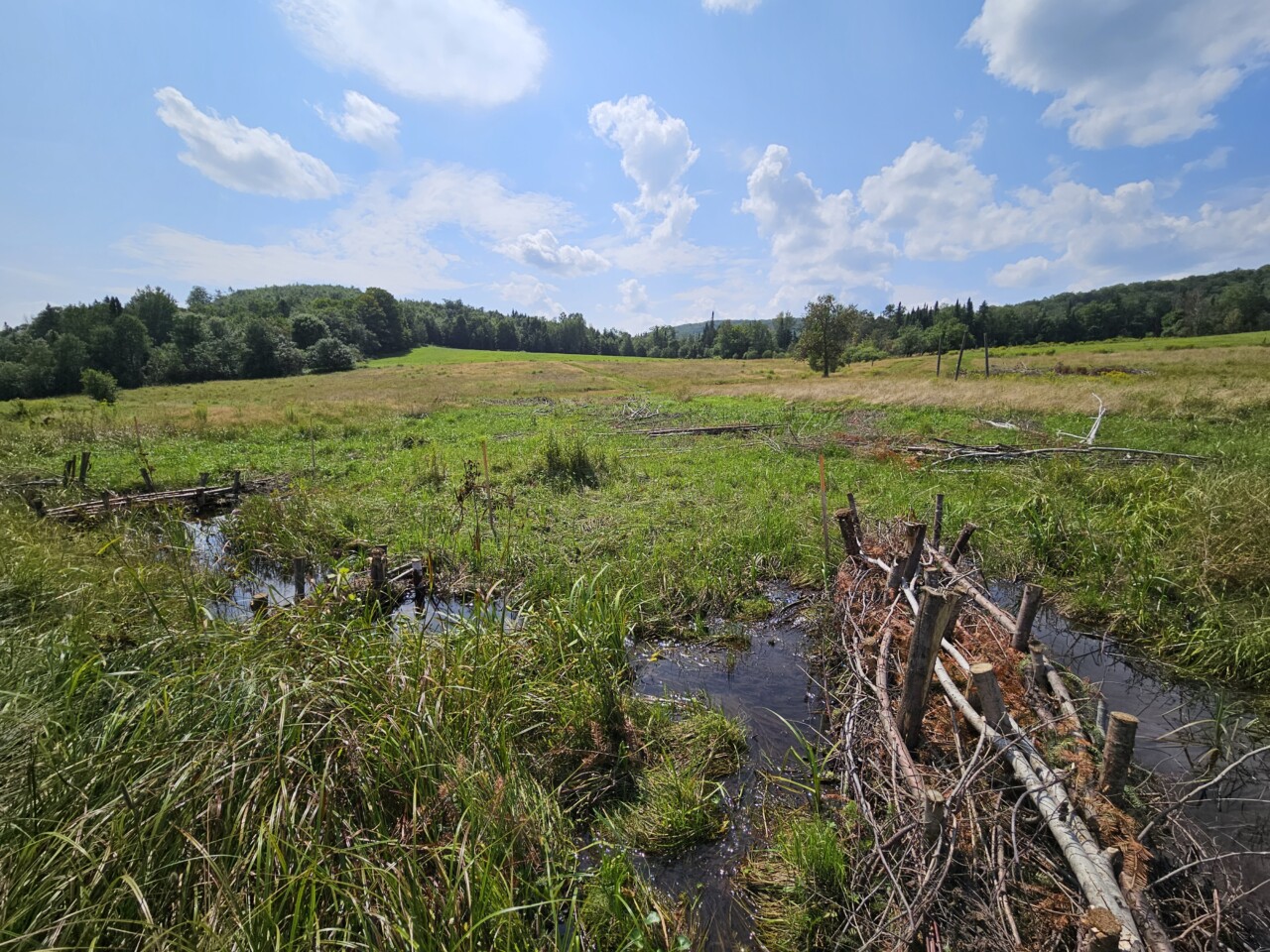The Riparian Lands Program began in 2020 as a collaboration between Vermont Fish and Wildlife (VFWD) and NorthWoods Stewardship Center. During that time, we worked alongside the VFWD, U.S. Fish and Wildlife Service (USFWS), Orleans County Natural Resources Conservation District (OCNRCD), and the VT Department of Environmental Conservation (VT DEC) to help develop priorities for riparian restoration projects through tree planting, bank stabilization, and identifying potential areas for river easements.
In 2021, our partners at the Memphremagog Watershed Association (MWA) expanded capacity and began to take over public outreach and project development, allowing NorthWoods to focus on project implementation through our Riparian Lands Crew. NorthWoods also began a concerted effort to assist the State with collecting native riparian tree and shrub seeds for experimental hydroseeding projects, collaborating with partners from the Intervale Conservation Nursery (ICN), VFWD, and USFWS.
Today, NorthWoods’ seasonal crews complete seed scouting and collection; tree planting; invasive species removal; access area improvements and beaver dam analog construction from March through November.

Direct Seeding Projects
Seeds collected will be used in direct seeding project locations with Vermont Fish and Wildlife to revegetate abandoned agricultural fields infested with reed canary grass and other invasive species. Click here to learn more about this and other riparian restoration projects in action. Partnering with the Intervale Center, a small percentage of seeds will also be used to help propagate starts for ICN and be used in restoration projects all over the state.
- quaking aspen
- balsam poplar
- eastern cottonwood
- shrub willow
- black willow
- American elm
- silver maple
- red maple
- chokecherry
- black cherry
- speckled alder
- northern white cedar
- tamarack
- red spruce
- gray birch
Seed (Collection) Cleaning and Storage
Riparian Lands Native Seed Partnership Newsletter
Fisheries Enhancement

Tree Planting
Invasive Control
Process-based Restoration
Access Area Improvement Projects
In September of 2022, the Riparian Lands Crew, members of the Conservation Corps, and a private excavator operator installed four separate access areas on the Moose River – three in Victory, Vermont, and one in Concord, Vermont. These access areas were constructed so the public has safe access to the river for boating and other recreation. The project took a total of four weeks to complete, with about a week dedicated to each individual site. In 2023, members of the Youth Conservation Corps went back and spent some time doing maintenance on these sites!
Riparian Lands Program Timeline
2020: The Riparian Lands Program at NorthWoods Stewardship Center (NWSC) began by hiring the Riparian Lands & Forestry Projects Outreach Coordinator. Originally, the program was formed as a collaboration between Vermont Fish and Wildlife (VFWD) and NWSC to conduct outreach to private landowners within the Memphremagog Basin Watershed that held land adjacent to State-owned Fish & Wildlife parcels. The Coordinator worked alongside VFWD, U.S. Fish and Wildlife Service (USFWS), Orleans County Natural Resources Conservation District (OCNRCD), Vermont Department of Environmental Conservation (VT DEC) to help develop priorities for riparian restoration projects through tree planting, bank stabilization, and identifying potential areas for river easements.
2021: The Memphremagog Watershed Association (MWA) hired a Watershed Project Manager and began to take over doing public outreach and developing projects so that NWSC could focus on hiring their first short season Riparian Lands Crew and implementing projects. 2021 was the first year NWSC began a concerted effort in assisting the State with collection of native riparian tree and shrub seeds for its hydroseeding project. During this short spring season the crew also helped continue work (begun by the Forestry Department) on removing invasive honeysuckle at South Bay Wildlife Management Area (WMA) and planting trees at Willoughby Falls WMA. The RL Coordinator continued to collect seeds throughout the year, collaborating with partners from the Intervale Conservation Nursery (ICN), VFWD, and USFWS. The Conservation Science Department (Meg and Jess) joined the ICN folks to tour the New York State Tree Nursery in Saratoga.
2022: After touring NY’s facilities and a winter of seed research and extensive planning, NorthWoods expanded the length of the Riparian Lands Crew season to run from early March through mid-November in order to capture the full length of seed collecting here in Vermont. The two-person crew underwent intense training for their first month and spent much of their time scouting the Northeast Kingdom for good collection locations for our targeted species. To help process and store seeds collected throughout the season, NWSC ended up purchasing a Dybvig Seed Cleaner and an industrial fridge. At the end of their season, the Riparian Lands Crew helped the RL Coordinator compile an entire binder of information to be used in future years.
2023: Vermont’s State Seed Coordinator (housed by the Intervale Center) is hired at the start of the year. NWSC begins working closely with this state coordinator to develop protocols for the upcoming seed collection season and once again visits the New York State Tree Nursery to tour their facilities, this time with more knowledge and more targeted questions! The Intervale creates a state seed map, using points collected during the 2022 field season by NWSC, some points from Intervale employees, and The Nature Conservancy (TNC). NWSC hires another two-person crew for March through mid-November to continue collecting seed for state projects, tree planting, removing invasive species, and constructing beaver analogs.

Seed Collection Map
Map created in partnership with the Intervale Center
This work is made possible through funding by the Great Lakes Fisheries Commission (GLFC), secured thanks in part to retired Vermont Senator Patrick Leahy.




























